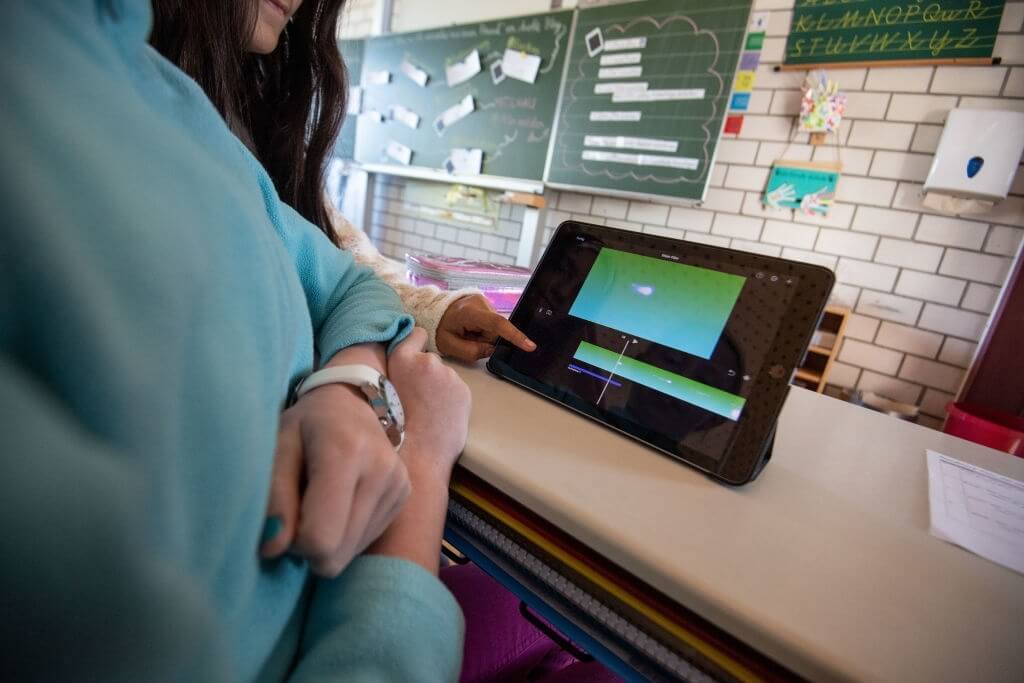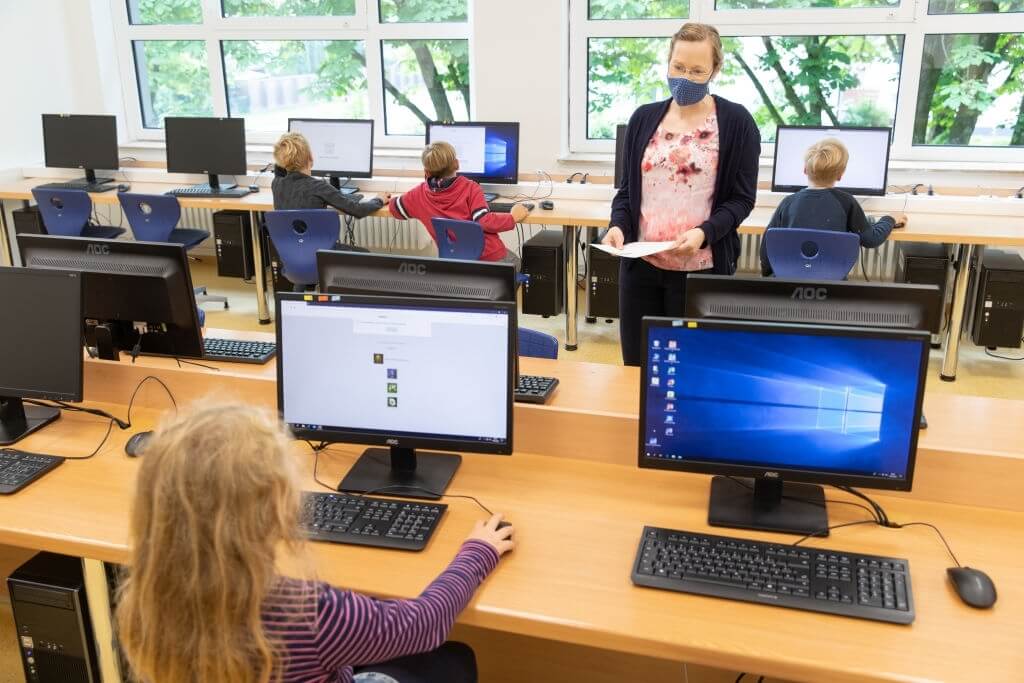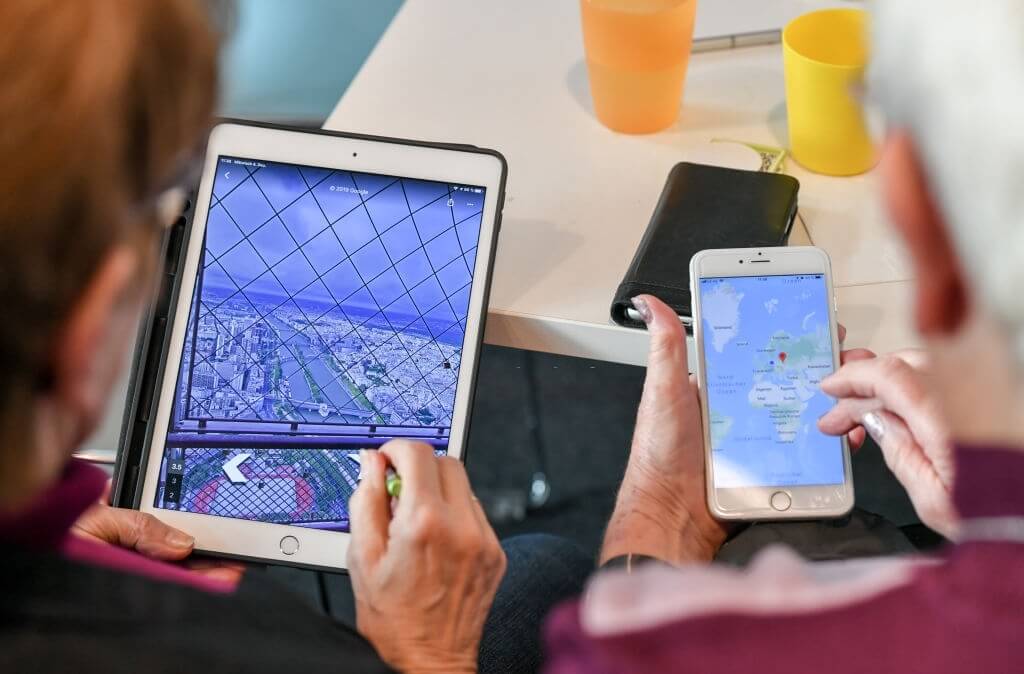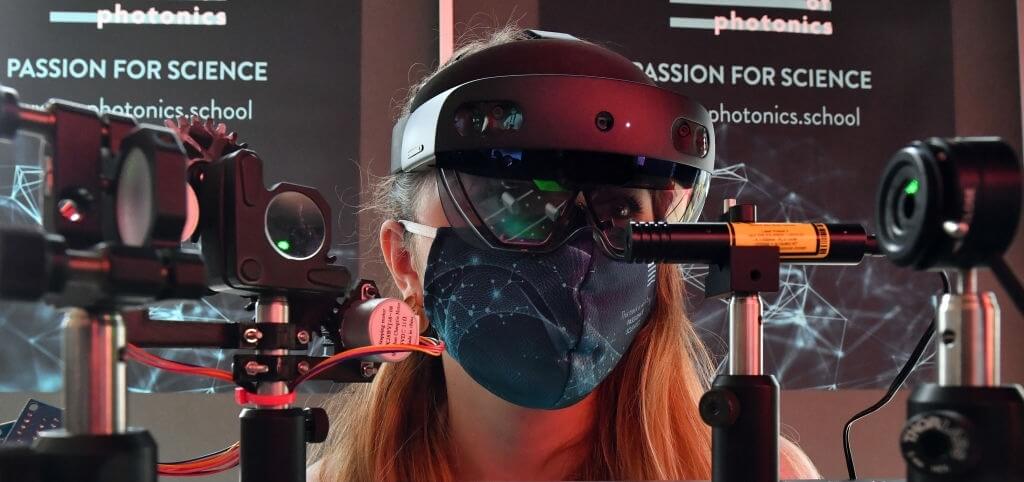Several years ago, gadgets and technology were conceived as disturbances to learning. That’s why when you were still studying, you only got to play with your phone during the weekends, right? But nowadays, the tables have turned! Instead of a disturbance, technology can spark and aid learning.
E-learning, as we call it now, can do more good than harm. So let’s see several benefits of integrating technology in learning. And the multiple benefits it can give to the classroom and the students as well.
13 benefits of using technology in the classroom
Improved knowledge retention
The key to helping students retain information is to have them interested. And students, for a start, are already interested in technology. When you capture the interest and attention of a student, it’s like tapping into a cord in their brain that enhances retention.
In purely traditional learning, a student’s attention span may be less than 15 minutes, 10 minutes tops. E-learning enhances that attention span into folds. One of The factors why technology can grab a student’s attention better is because it has an element that may be lacking in traditional learning – fun.
We’ll discuss that further in the next section.
Different learning styles
Admit it or not, traditional learning has fallen into a cycle of routine- the usual discussion, Q & A, and tests. And students may have gone bored with this routine. As the semester passes by, nothing new is integrated into the curriculum. New knowledge, yes, there are tons of it. But there aren’t any new approaches. It’s just the same banana.
The teacher will discuss the lesson then the students will be given time to study. and a pop quiz commences. Sometimes, there’s a reward for the one who will finish the test with flying color. It can be fun at first. But if it would fall into a routine, it can be boring.
And this is where classrooms can benefit a lot from technology. E-learning makes it accessible to infuse different styles and a different approach to everyday classroom scenarios. And with the myriad of tools, apps, software, and new techniques available, teachers can always find a way to integrate different ideas into the learning curriculum. And this variety makes learning fun. Technology can make even the simplest mundane task fun and exciting.
More room for individual learning
Everyone learns differently. While a pure traditional textbook can present an opportunity for individual learning with the student reading in advance a home, it’s limited. With the aid of technology, students can do additional research and learn at their own phase.
In addition, technology gives more aid to disabled students. If a student is having a hard time catching up in school. Technology can break the barrier between disabled students and learning. They don’t usually have access to learning tools and relevant education programs in traditional learning. So let’s expound on that on the next number.
Equal opportunity for learning for disabled students
As mentioned in number 3, technology can break the barrier between a disabled student and learning. While there are special schools to cater to special needs children, self-learning is also important. There is a myriad of software and hardware designed to help students with special needs. And these can be a supplement to their learning in school.
Assisted technology and specialized technology also helps disabled students become independent. These programs are specially designed to help disabled students become more independent in terms of learning. With such programs, they would be able to complete a task or homework on their own. Thus, it will give them more confidence to pursue higher education in the future.
It can make learning more interactive and collaborative
Technology encourages active participation in class instead of a passive one. It opens up an avenue where students become more interested to react, commenting, and engaging. It somehow stirs up their proactive button and makes them willing to participate. As compared to a traditional setting where only a few would raise their hand when the teacher asks a question. Many will be willing to voice out their opinions in a forum.
Also, technology can enhance collaborative behavior in students. Certain classroom tasks involving technology would require different aspects. And this will urge the students to ask for help from his peers, classmates, or teachers. And the more technologically advanced student will be helping the inexperienced one. So this fosters a sense of collaboration in the classroom.
Connects teacher more with students
With technology, teachers are more attuned to finding ways to infuse fun into their daily lessons. And with a lot of tools online, teachers will be inspired to regularly whip up something new and exciting for their students.
Technology aids teachers to think outside the box. It also makes them excited to see how each online tool can help monitor the progress of their students. Thus, not only students are veered away from the boredom of pure traditional learning. Technology also inspires teachers to do more and engage more with their students. Thus, a better relationship is formed. And this can greatly impact the students’ learning.
It makes learning easier
Technology can make life easier, even learning. And this is where virtual simulations can facilitate learning in all students. A lot of concepts in science, engineering, and math may be hard to comprehend. And you’d find some teachers struggling to find means on how to make a struggling student understand. Virtual simulations can be a key to better understanding these hard concepts.
It will help teachers explain difficult theories and ideas. Since most persons are visual by nature, virtual simulations can really amp up the learning.
Better communication
Even the earnest teacher will find themselves overworked. Especially if he has a lot of struggling students in the class. And when a teacher is overworked, communication stalls.
Online forums and chats can be great avenues to foster better communication among all students and the teacher. It also gives more opportunities for students to respond to queries, especially those who normally don’t speak up in class. And this can be of great help to a teacher.
More objective and continuous assessment
Technology can help teachers see their students’ progress better. Learning software keeps track of how long a student will take to finish a certain task. And teachers will see then which areas specifically, the student is struggling in. So the teacher can help the student in private.
Furthermore, grading and assessment via this channel are more objective and free from biases. Also, it will show which students are adapting well to a specific teaching plan versus those who aren’t. So, it’s easy to pinpoint who needs an alternative method of learning.
More access to advanced information
We all had our research sessions in the library. And everyone can attest how challenging it can be to scour every aisle for the book that you need for your research. But with technology, it’s easier to access E-books and other sources of advanced information.
Students can hover through search engines. It’s also easier to store relevant information for your research via cloud storage or Google drive.
It’s easier to consolidate more facts and to filter out the relevant ones. You just type in the search keyword and it will deliver tons of rich sources of information. But of course, you still have to discern the legit ones. But it’s way faster than spending a whole day in the library.
Paves the way for more successful teachers
It’s not only students who will benefit from technology, teachers as well. And effective and successful teachers are better mentors for your children.
The convenience of self-learning and resources from the internet can help teachers level up their teaching skills without spending too much time. Online certifications and advanced learning are available on the internet.
With technology, even busy moms and busy dad teachers can still have ample time to further develop their craft, obtain a master’s degree or supplement their knowledge without having to leave home. It will also give them more time to help struggling students more.
Students learn useful life skills
There are several ways that technology can help students as early on, deal with real life. And these are the following:
- It helps them distinguish real sources of information versus fake ones.
- It teaches them proper email etiquette. Students learn even before they join the workforce on how to effectively write an email.
- They also learn proper online etiquette.
- It hones their skill in making presentations.
- Improves their critical thinking and problem-solving skills.
- Teaches them the value of collaboration. And how to professionally go about it
Technology prepares the student for the real life
Everything is digital, everything involves technology nowadays. So this kind of prepares the student for real life. Before they pass that interview at a distinguished company, they already know how to properly use technology. And what specific app to use for a specific task.
This could prove to be very useful once they have their own cubicle in an office. It might also help them land their dream job.
In addition, it helps them understand cross-cultural differences. It prepares them for meeting people from all walks of life and all races. It also develops their self-confidence and enhances their social responsibility.
The above-mentioned skills are par to 21st-century skills. For students to be successful later in life, they have to possess and hone these traits.
Many jobs entail the use of Microsoft and Google drive on a daily basis. From creating presentations, and decks, to balance sheets, that’s just a few. So students will adapt quickly if they’ll be learning these skills whilst they are still in school. It can also make them more successful at work and feel more confident.
How to start integrating technology into the class
While it’s rather exciting to go full techie, hold your horses. While integrating technology means more than just teaching students basic computer skills, it has to be planned and it’s best to start small. There is such a thing as an overload of information. And it’s not going to be productive as well.
Lectures and testing papers should not be abandoned, instead, it should be supplemented with technology. The word is to integrate rather than replace. And here’s how.
- Through games and PowerPoint presentation
- Introduction of an online grading system
- The use of classroom tablets, if possible for the school
- Use of software that’ll keep parents in the loop regarding school events, projects or just to keep an open line of communication
- Posting homework assignments online using apps like Moodle or Brightspace.
There are a ton of benefits from integrating technology in the learning curriculum, and it far outweighs the cons. And it’s not only the students who would benefit from this, the teachers as well.
But before integrating technology in the learning curriculum, a lot of planning has to be made. And school administrators, the board, and the owners should involve the teachers in the decision making. Teachers should not be left behind. Instead of just giving them the mandate to integrate technology in their class, sit with them first.
Some teachers are already spending a great deal of time refining their craft. And some might see technology as a bit of a hassle., So teachers should also be involved in how and what type of E-learning will be adapted by the school.
To prevent technological resistance from the teachers, learning should be streamlined first. Adapting a starter template will enable all teachers to start on equal footing. Thus relieving the stress that can come with adopting a whole new approach.
Nowadays, computer literacy may be more useful than some traditional skills that are taught in school. Technology prepares students for the real life, the real battle. And it’s not possible to survive in the real world without technology.
That’s why it’s better to teach kids in the earliest stages. There are learning resources that apply to grade school, middle school, high school, and college. And it’s fast-evolving, just like how it is in the real world. So students must keep up or they will be left behind.





